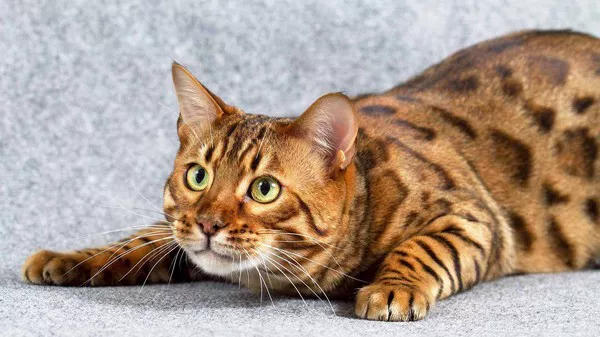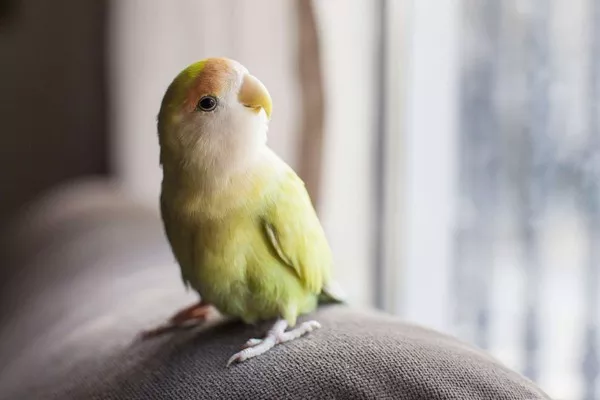Calico cats, with their stunning tricolored coats, have long fascinated cat enthusiasts around the world. However, some pet owners have reported that their calico cats display aggressive or “mean” behavior, leaving them puzzled and concerned. In this article, we will delve into the reasons behind the perceived meanness of calico cats and explore the complexities of feline behavior. By understanding the various factors that influence a calico cat‘s temperament, we can develop a deeper appreciation for these unique felines and build stronger bonds with our beloved companions.
Understanding Feline Behavior
Feline behavior is a fascinating and intricate aspect of our feline companions’ lives. Cats, including calico cats, have evolved as solitary hunters, and their behavior is shaped by a combination of innate instincts, genetics, early experiences, and environmental influences. As pet owners, gaining insight into feline behavior is essential for providing our furry friends with a nurturing and enriching environment. Let’s delve into the details of understanding feline behavior:
Instinctual Behaviors:
Many of the behaviors displayed by calico cats are rooted in their instinctual nature as predators. These instincts have been honed over thousands of years to ensure their survival in the wild. Some common instinctual behaviors include:
Hunting: Cats are natural hunters, and even in domestic settings, they may exhibit hunting behaviors, such as stalking, pouncing, and playing with toys that simulate prey.
Scratching: Scratching is an innate behavior that serves multiple purposes for cats, including marking territory, stretching, and maintaining their claw health.
Grooming: Grooming is a vital aspect of a cat’s behavior. Not only does it keep their fur clean and free of debris, but it also serves as a self-soothing mechanism and reinforces social bonds with other cats.
Social Structure and Communication:
Contrary to popular belief, cats are social animals. While they may not exhibit the same pack behavior as dogs, they have a complex social structure and communicate with each other using a variety of vocalizations, body language, and scent marking.
Vocalizations: Cats use an array of vocalizations, from meows to hisses, to communicate with humans and other animals. Each vocalization carries a unique message, such as meowing for attention, purring to show contentment, or growling when feeling threatened.
Body Language: Understanding feline body language is crucial for interpreting a cat’s emotions and intentions. Postures like arching their back in a defensive stance or rolling on their back to show trust can convey valuable information about their current state of mind.
Scent Marking: Cats have scent glands on their cheeks, paws, and tail base, and they use these to leave pheromone markers in their environment. Scent marking is a way for cats to establish their territory and communicate with other cats.
Emotional and Mental Health:
Calico cats, like all animals, experience emotions and can be sensitive to changes in their environment and routine. Understanding their emotional and mental well-being is essential for providing a happy and stress-free life.
Stress and Anxiety: Changes in the household, introduction of new pets, or unfamiliar visitors can cause stress and anxiety in calico cats. Common signs of stress include excessive grooming, hiding, or changes in eating habits.
Enrichment and Play: Providing mental and physical stimulation is crucial for a cat’s well-being. Interactive toys, scratching posts, and puzzle feeders can keep calico cats engaged and prevent boredom-related behavioral issues.
Creating Safe Spaces: Cats need a designated safe space where they can retreat to when they feel overwhelmed or stressed. Providing cozy hiding spots and quiet areas in the home can help alleviate anxiety.
Feline Communication: Tail and Ears
A cat’s tail and ear positions can provide crucial insights into their current mood. When a calico cat’s tail is held high and their ears are forward, it indicates a content and relaxed state. Conversely, a lowered or puffed-up tail, along with flattened ears, may signal fear, stress, or potential aggression. Recognizing these visual cues can help prevent misunderstandings and unnecessary conflicts.
Vocalizations and Body Postures
Calico cats, like all felines, use a range of vocalizations, from meows to growls, to express themselves. Each vocalization has a unique meaning, such as meowing for attention or growling when feeling threatened. Understanding their different sounds and accompanying body postures can give us valuable insights into their emotional state and intentions.
Nature vs. Nurture: The Role of Genetics and Environment
The behavior of calico cats is influenced by both genetic predispositions and environmental factors. Recognizing the interplay between nature and nurture can help us comprehend the complexities of their personalities.
Genetic Factors
The fascinating genetics of calico cats play a role in their temperament. While calico cats don’t possess a specific “mean” gene, certain inherited traits may influence their behavior. For example, some genetic variations may lead to increased territorial behavior or heightened sensitivity to certain stimuli. Understanding these genetic factors can offer valuable insights into why some calico cats may display behaviors that are perceived as aggressive.
Early Socialization and Environment
Early socialization plays a vital role in shaping a calico cat’s behavior. Kittens that experience positive interactions with humans and other animals during their early weeks are more likely to develop into well-adjusted and sociable adults. On the other hand, a lack of early socialization or exposure to negative experiences may lead to fearfulness or defensive behaviors.
The environment in which a calico cat is raised also plays a significant role in their behavior. Stressful or unpredictable living conditions can trigger anxiety and aggression in otherwise friendly cats. Providing a safe, stimulating, and enriching environment can help mitigate any negative behaviors associated with their upbringing.
Understanding Aggression in Calico Cats: Causes and Remedies
Aggression is a common behavioral concern among calico cats, but it is essential to recognize that aggression is not synonymous with meanness. Aggression is a natural response that can be triggered by various factors, and addressing these underlying causes is key to managing aggressive behaviors.
Play Aggression vs. Fear Aggression
Calico cats, like all cats, may engage in play aggression, which is a normal behavior during kittenhood. However, if play aggression persists into adulthood, it can become problematic. Additionally, fear aggression may arise when a calico cat feels threatened or uncomfortable in their environment. Identifying the type of aggression can help tailor appropriate intervention strategies.
Seeking Veterinary Advice
If a calico cat’s aggressive behavior is a sudden change from their usual temperament, it is crucial to seek veterinary advice. Underlying medical issues, such as pain or discomfort, can manifest as aggression. A thorough veterinary examination can rule out any physical causes for the behavior.
Behavioral Training and Positive Reinforcement
For calico cats exhibiting aggressive tendencies, behavioral training and positive reinforcement techniques can be effective in modifying unwanted behaviors. Reward-based training can help redirect negative behaviors and promote positive interactions. However, it is essential to remain patient and consistent throughout the training process.
Conclusion
Calico cats, with their enigmatic beauty and unique personalities, continue to captivate cat enthusiasts around the world. While some may perceive their behavior as “mean,” understanding the complexities of feline communication, genetics, and environmental influences can dispel this myth. By recognizing the various factors that contribute to a calico cat’s behavior, we can foster stronger bonds with our feline companions and provide them with the care and understanding they need to thrive happily and healthily in our homes.
Related Topics:


























